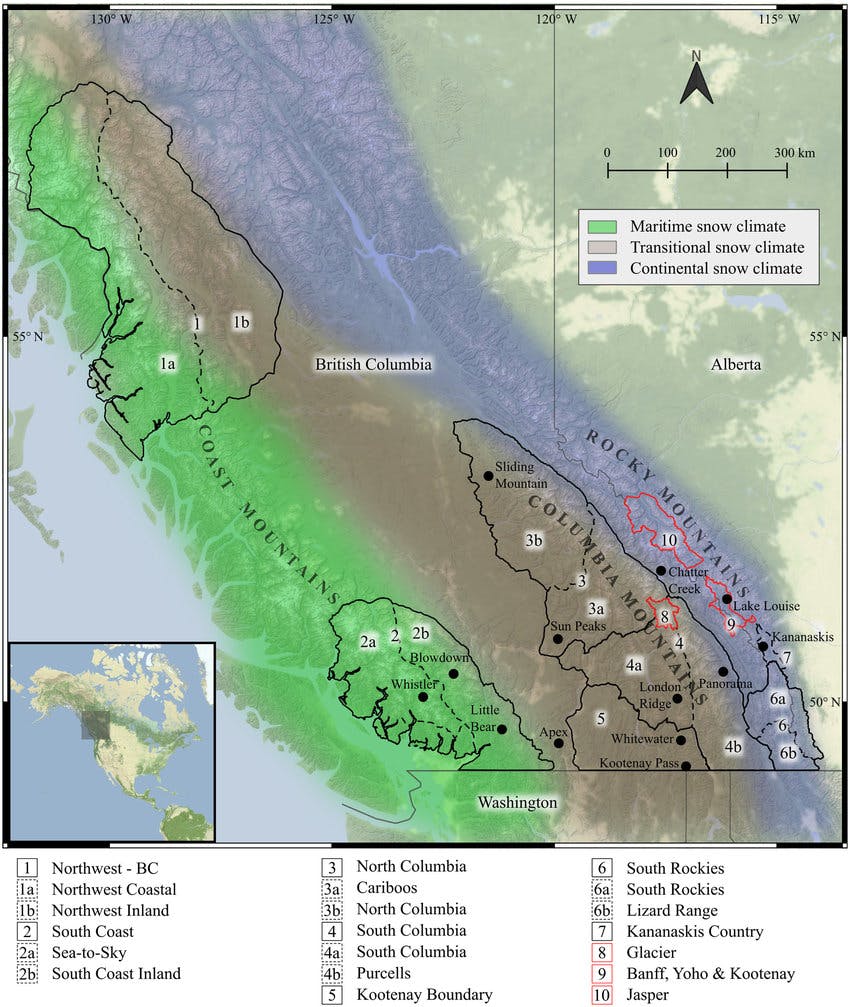
- Credit
- Simon Fraser University Avalanche Research Program/Stamen Design
The idea of a snow climate is a way of grouping geographical areas according to broad trends in weather and snowpack composition. Three snow climates have generally been used to categorize different regions in Canada:
Maritime Snow Climate
A maritime snow climate is found in mountain ranges closest to the ocean. In western Canada, it is found in the Coast Mountains and Cascades. In eastern Canada, it is found in coastal Quebec and Newfoundland. Maritime snowpack regions are characterized by frequent intense storms, deep snowpacks, and warm weather. Avalanche danger in maritime snowpack regions is typically connected with storm events where snowfall rapidly accumulates and forms unstable storm slabs or wind slabs. A maritime snowpack often stabilizes within one or two days of a storm. Persistent weak layers are less common in a maritime snowpack, but they are not rare. The perception they are rare may in fact increase the chance of someone getting caught by surprise by a persistent slab avalanche.
Continental Snow Climate
A continental snow climate exists in mountains a long distance from the ocean, such as the Rocky Mountains. A continental snow climate is characterized by cold weather and thin snow cover from relatively infrequent storms. These conditions frequently lead to the formation of persistent weak layers such as facets, depth hoar, and surface hoar. As a result, avalanche danger in a continental snow climate can rise sharply with only light snowfall and often persists long after storms.
Transitional Snow Climate
The snowpack in a transitional snow climate shares characteristics of both maritime and continental snowpacks. In Canada, it is found in the Columbia Mountains of the BC Interior. The depth of a transitional snowpack can be similar to a coastal snowpack, but it is generally composed of less dense snow. Weather conditions are often conducive to the formation of persistent weak layers that can last for weeks or even months.